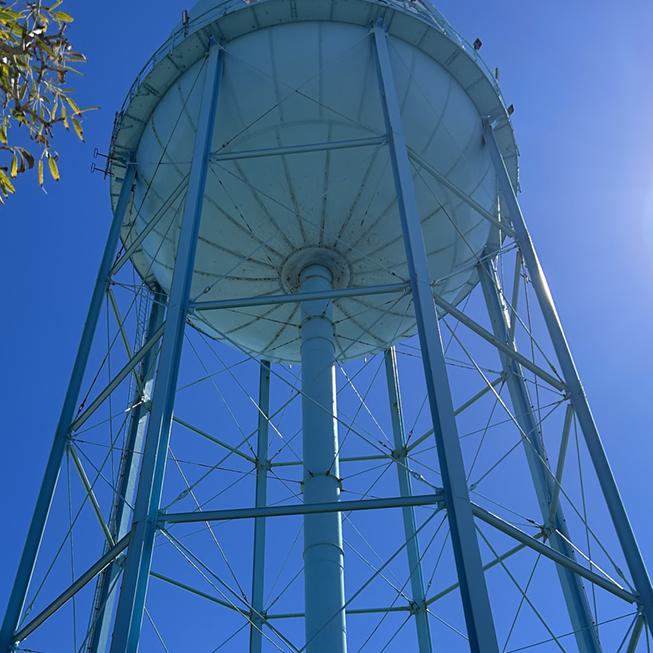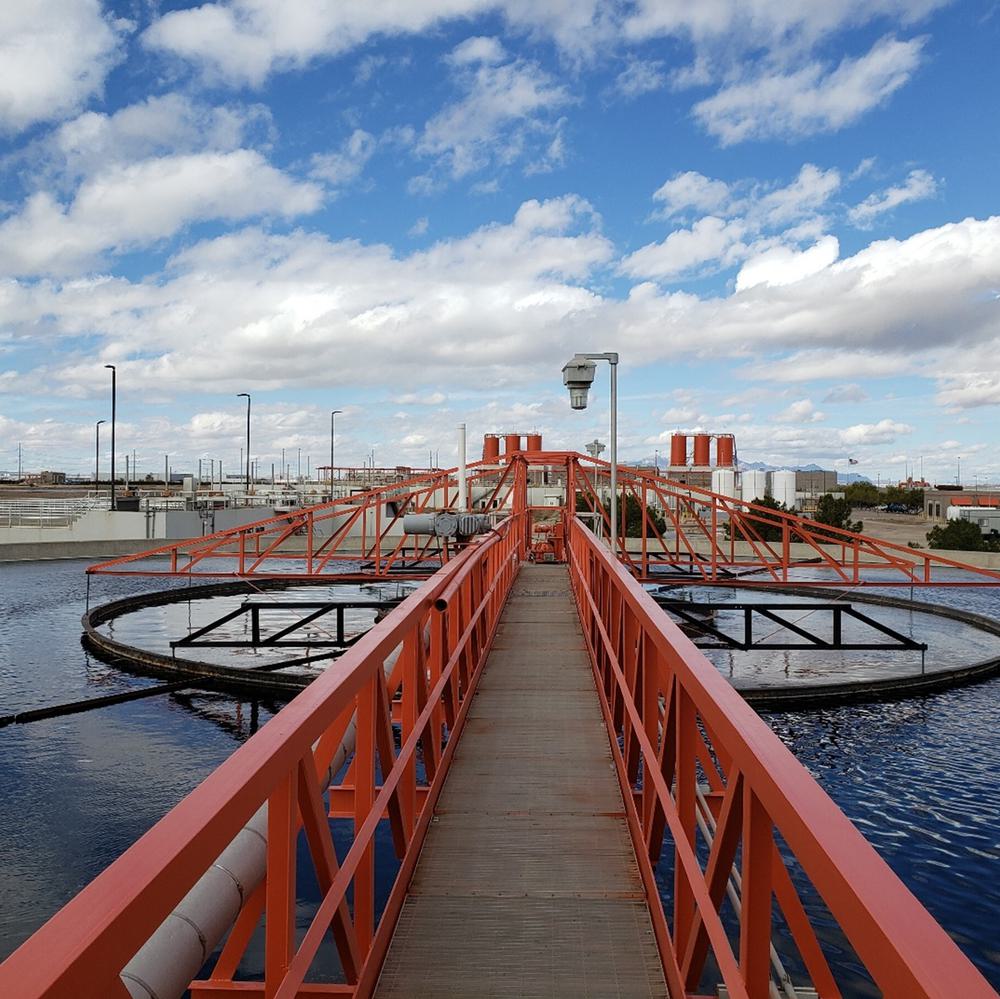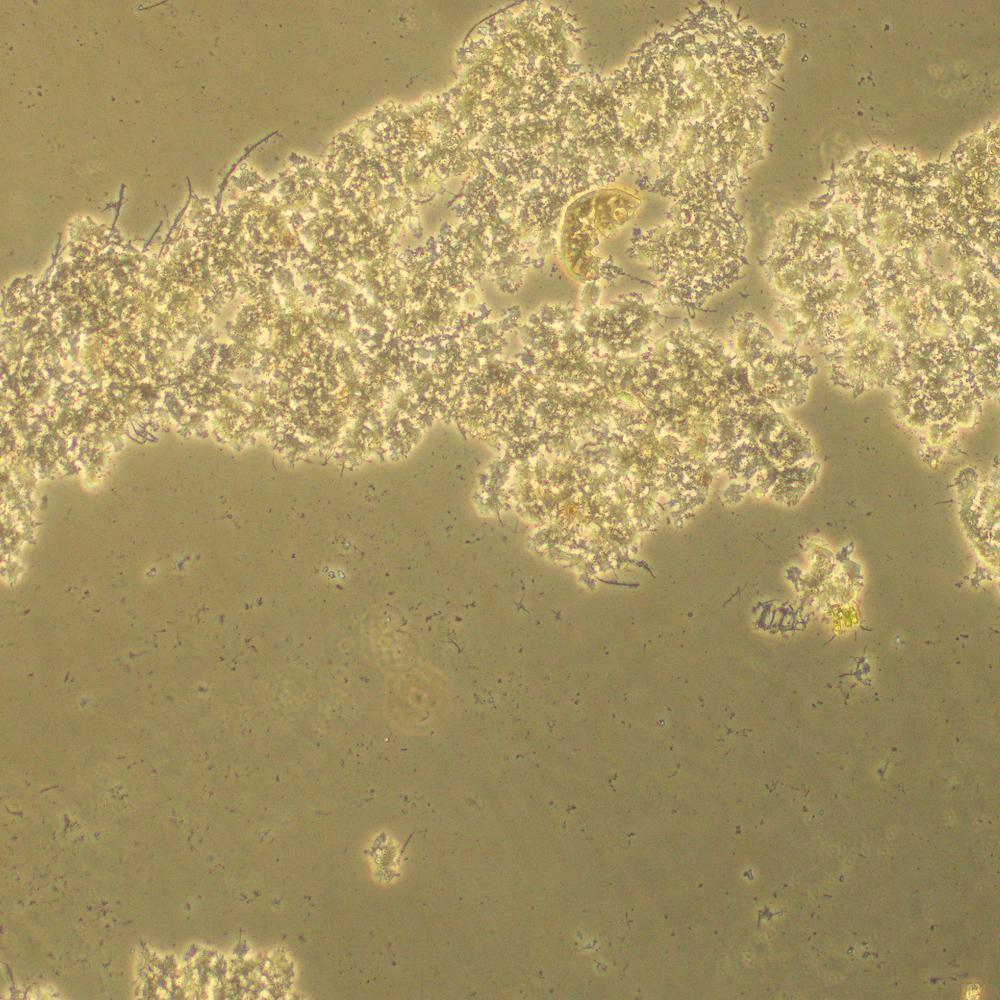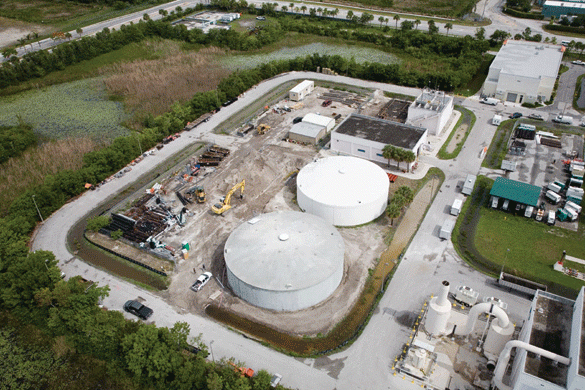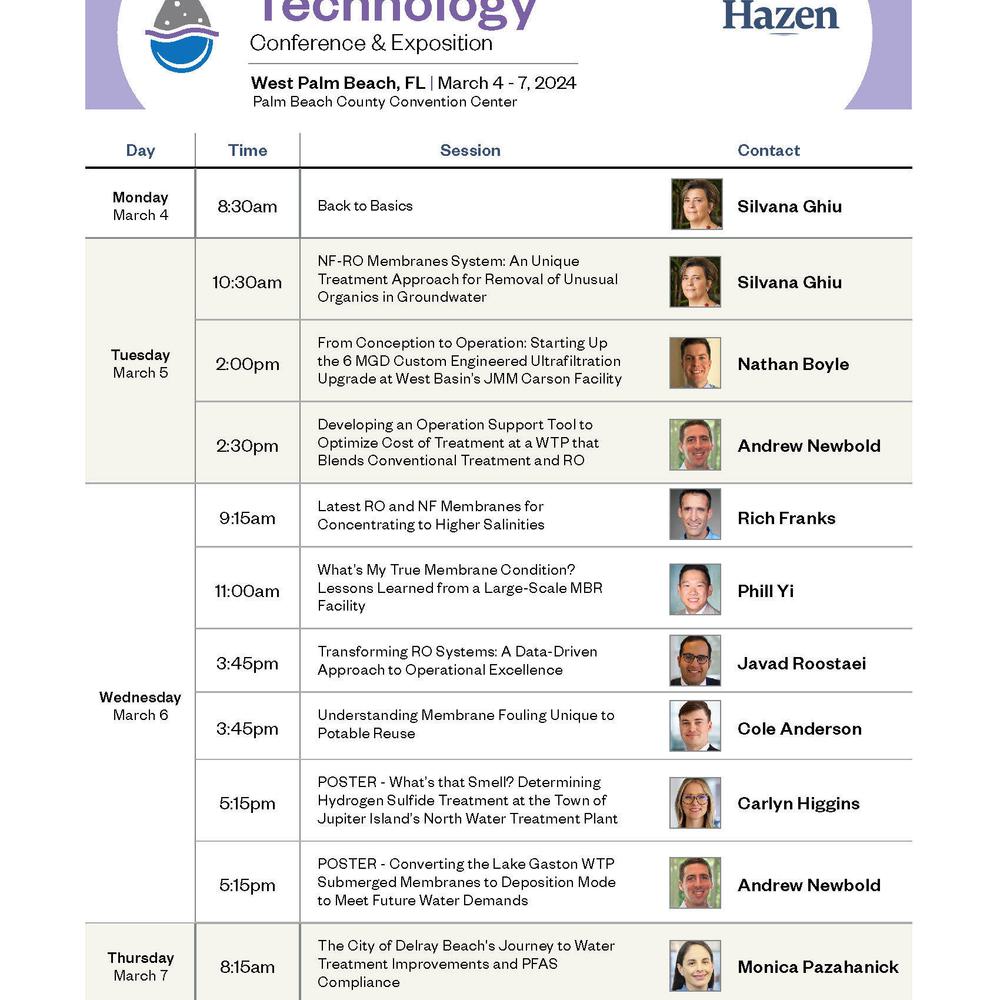Electrochemical Oxidation Pilot Study Explores New Frontiers for PFAS Destruction
Hazen, in partnership with the low-energy electrochemical oxidation (EO) tech startup Aclarity and The University of Texas at El Paso (UTEP), is leading a pioneering 60-day study on PFAS destruction technology for use in waste residuals from drinking water treatment.
At a Glance
- A PFAS pilot project partnership between Hazen, Aclarity, and UTEP is testing EO technology for destroying PFAS in water.
- The goals of this project include evaluating electrode longevity, water quality impacts, and cost-effectiveness of the technology over a two-month pilot period.
- Results of this study will help push the industry forward as it evaluates the various PFAS destruction technologies on the market.
The Race to Destroy Forever Chemicals in Water
The Environmental Protection Agency (EPA) has set enforceable limits for six PFAS chemicals in drinking water, marking a milestone. Water systems must now meet these standards, testing and treating for PFAS if levels exceed the EPA's Maximum Contaminant Levels (MCLs). The industry has been gearing up for this, researching methods to eliminate PFAS from water entirely. Hazen, alongside university researchers and a PFAS destruction startup, is studying the effectiveness of EO technology in destroying PFAS in post-treatment residuals.
What Do We Do with Membrane Concentrate?
During the water treatment process, reverse osmosis generates two streams of water: one stream of treated water and another stream of residual water known as the membrane concentrate. The membrane concentrate is extremely brackish, being filled with salts, PFAS, and everything else that was removed during treatment. Conner Murray, PhD, PE, principal investigator of Hazen’s pilot study, has experience working in PFAS treatment in water systems, especially with treatment residuals. He has seen firsthand how widespread the concern is about membrane concentrate for utilities. “This is coast to coast,” Murray shares.

Conner Murray, PhD, PE is a water treatment engineer specializing in the transport and treatment of PFAS in a variety of water systems including drinking water, wastewater, and treatment residuals.
Related Topics:
“In California folks are interested in membrane solutions for PFAS, in Florida people are interested in membrane solutions for PFAS. And the question that everybody asks is, ‘What am I going to do with this concentrate?’ and ‘How is this concentrate going to be managed?’”
At treatment plants, membrane concentrate may be reused or disposed of, potentially reintroducing PFAS into the environment. Without breakdown, PFAS persist and cycle back into water systems. This poses environmental risks and could mean more work for utilities in the future if the EPA extends regulations to residual streams.
Breaking the Cycle with Destructive Technologies
“To manage the PFAS concentrated residuals, we need to develop destruction technologies,” explains Murray. “That’s the final chapter in their end-of-life disposal.” Hazen's EO pilot study occurs amidst competing PFAS destruction technologies, each striving to become the preferred method for effectiveness, efficiency, and affordability.
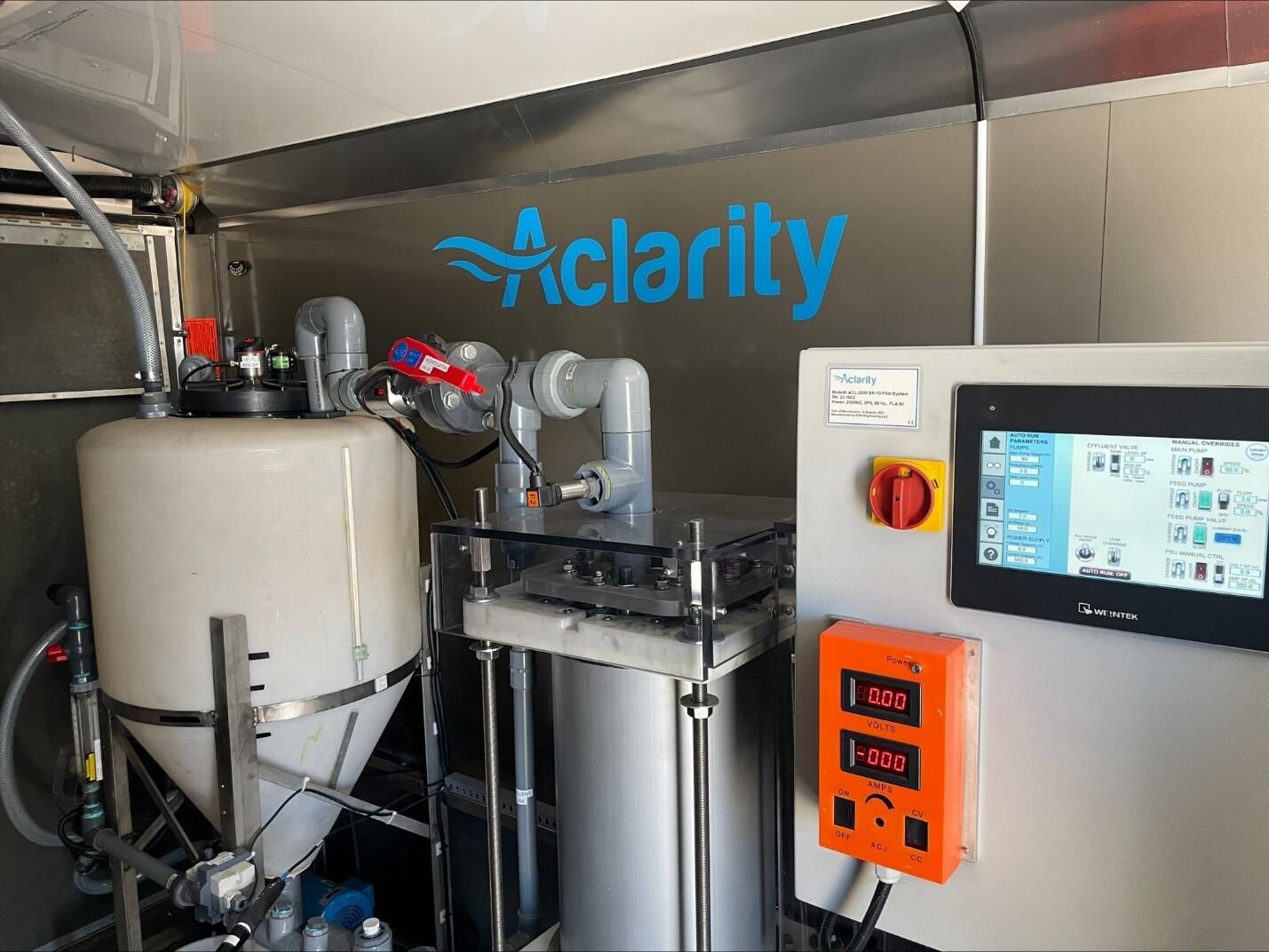
Inside view of Aclarity’s trailer with a feed tank, reactor and control panel set up.
Supercritical water oxidation (SCWO) is a prominent destruction technology that has fast reaction kinetics—it can do its job in seconds. This translates to smaller reactor volumes, but also high energy inputs. Hazen is already evaluating SCWO technology in other biosolids research projects. Other destruction technologies, including hydrothermal alkaline liquefication (HALT), plasma, and photochemical destruction, are also being investigated by several researchers as utilities continue to search for answers in management of PFAS-impacted wastes.
Relative to these other destruction technologies, in liquid streams, EO touts a relatively efficient PFAS destruction process. However, when it comes to EO technology in general, the question remains about the longevity of electrode materials. Until now, the longest pilot study to investigate continuous EO destruction of PFAS was 23 days. Hazen plans to run its study for 60 days, hopefully answering critical questions about the technology’s effectiveness over time.
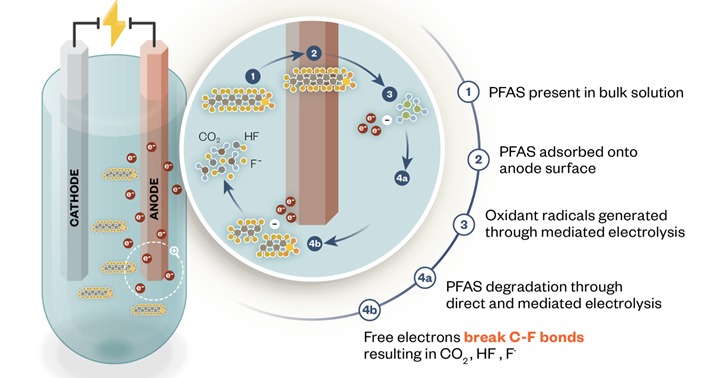
A closer look at how electrochemical oxidation (EO) destroys PFAS.
Collaboration Pushing Innovation Forward
Working at The Brackish Groundwater National Desalination Research Facility (BGNDRF) in Alamogordo, New Mexico, Dr. Eva Deemer, formerly the Interim Director from the Center for Inland Desalination at UTEP, is focused on developing technologies for the desalination of brackish and impaired groundwater found in the inland states. UTEP was already conducting desalination research at BGNDRF when the idea for the EO pilot was formed. Deemer is now a Principal Scientist with Hazen and continues to work on the pilot with UTEP.
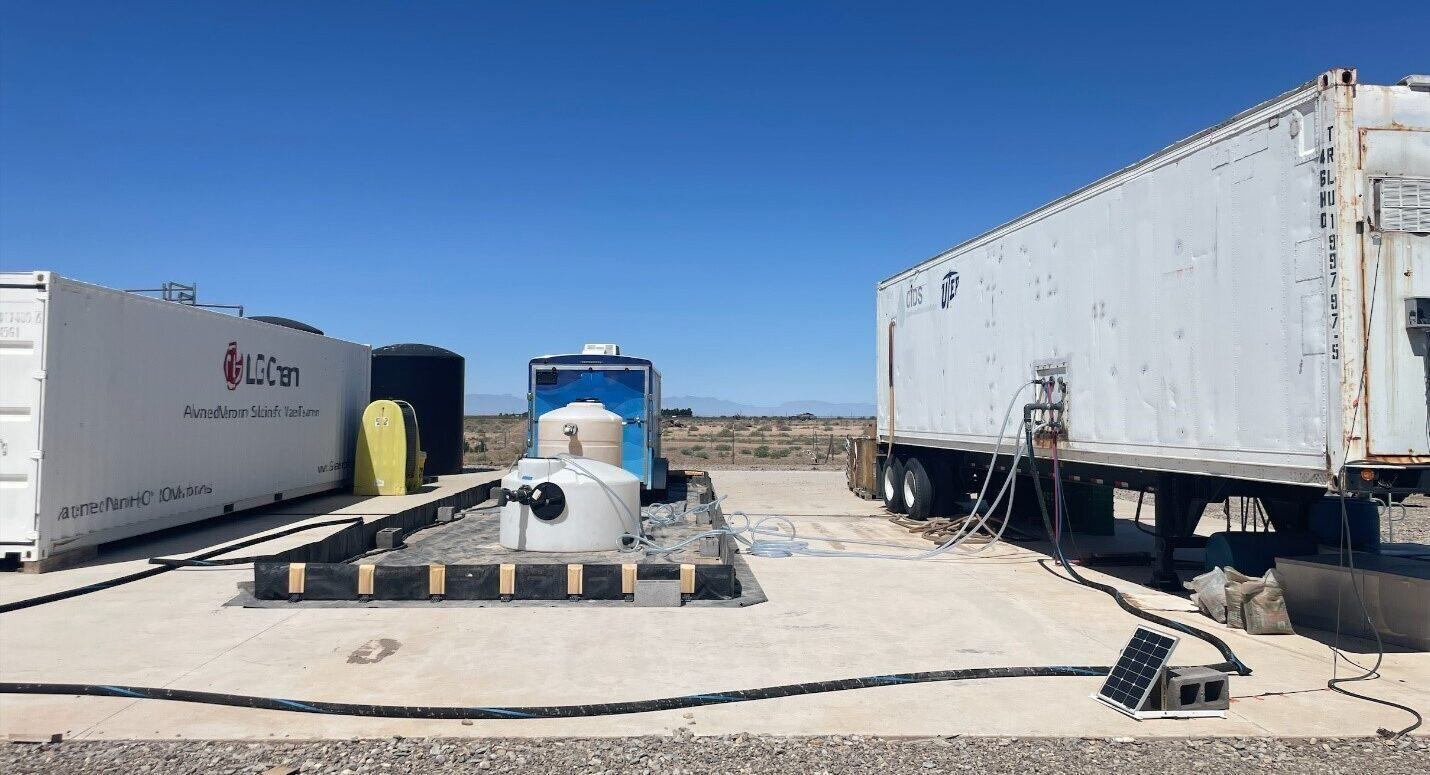
The pilot site at BGNDRF with the Aclarity trailer (left) receiving concentrated rejected brine from an NF system inside UTEP’s trailer (right). A feed and drain tank must be set up inside a berm to contain PFAS laden water and contain any spills from getting to the ground. All plumbing must undergo checks by BGNDRF staff to ensure no leaks or spills to prevent PFAS from leaching into the groundwater.
“They are treating brackish groundwater and desalinating it with reverse osmosis,” explains Murray. “In that process, they generate a stream of treated water, which is low in PFAS and low in salinity, and they generate a residual stream—the membrane concentrate—which is high in PFAS and very high in salinity. We then take that water and pipe it over to the destruction unit.” The destruction unit is a small EO reactor being provided by Aclarity, a tech startup working together with Hazen and UTEP to evaluate its EO technology.
“I’m very proud of the Aclarity team and all the hard work that has gone into reaching this deployment milestone,” says Pamela Lynch, Aclarity Chief Operating Officer, about the joint study with Hazen and UTEP. “Collaborations like this are invaluable to solve community and PFAS problems.”
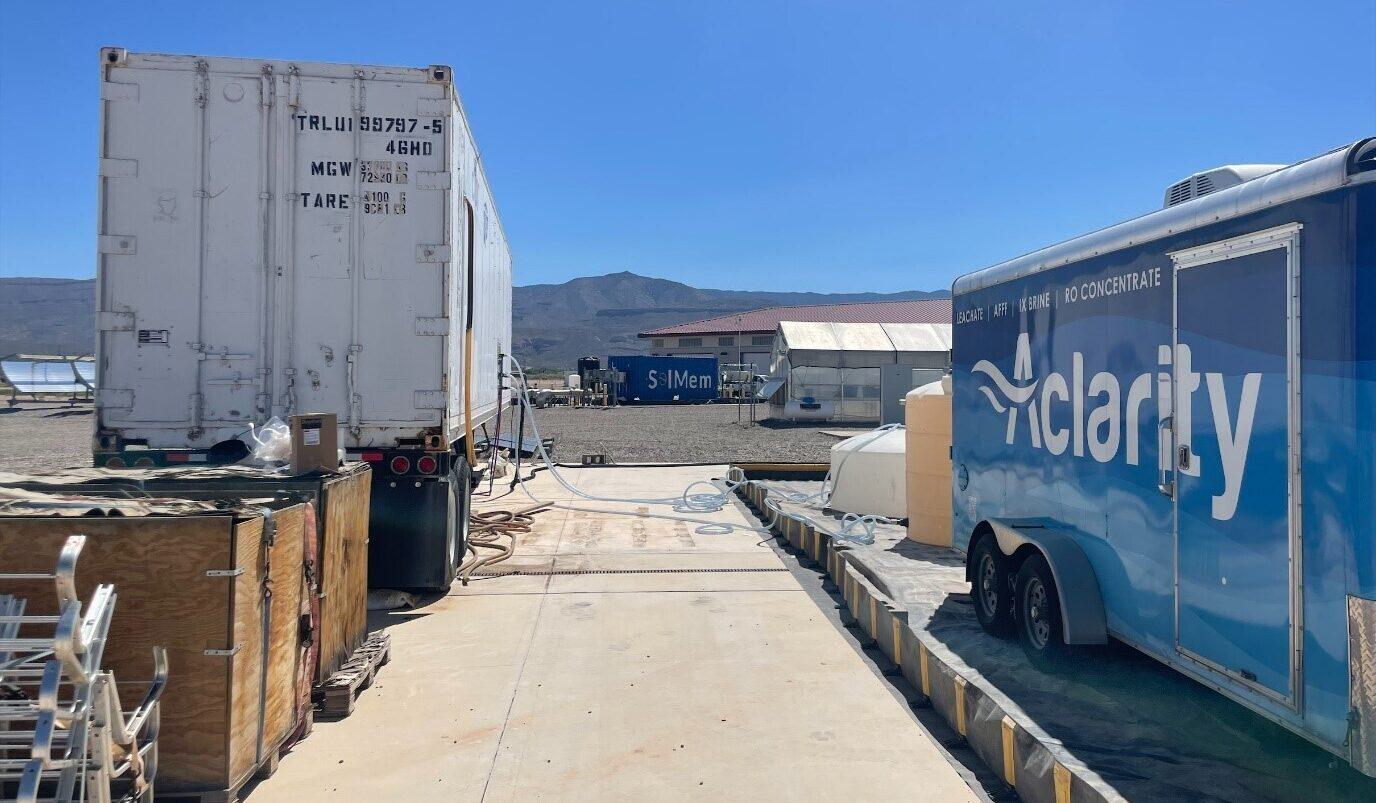
Another perspective: Aclarity trailer (right) receiving concentrated rejected brine from an NF system inside UTEP’s trailer (left).
Testing for Longevity
The true focus of the pilot is not just on proving the effectiveness of EO technology, but also on assessing how long electrodes can function before fouling. Murray explains that the challenge lies in preventing the buildup of material on the electrodes, which can decrease performance. “We’re basically seeing how long these electrodes can go without building up a thick cake layer of material,” Murray explains. “If we build up a foulant layer on the cathode, we are going to require greater power to achieve the same destruction performance as we did without the foulant layer.” To mitigate this, the team would initiate a series of acid rinse cycles to restore electrode performance.
Murray is particularly interested in identifying persistent foulants and assessing electrode sustainability. Questions remain about whether electrodes degrade over time and require frequent maintenance or replacement, which could affect the technology's viability as a cost-effective solution for utilities.
Beyond the Pilot Study
In addition to answering those questions through the pilot study, the team plans to publish their findings in a peer-reviewed journal. By sharing their evaluations with the industry, the team is helping push forward innovation in PFAS destruction technology. At the same time, the team’s findings will help Hazen deliver new expertise to utilities making important decisions about implementing this technology into their water treatment processes. “How do we, as the ones that are often connected to the utilities that may be applying this technology, turn this into something that they can now believe in?” asks Murray. When a utility is choosing which suite of technologies is right for their specific water treatment challenges, Hazen is poised to give the most holistic advice, having put this tech to the test first-hand.



